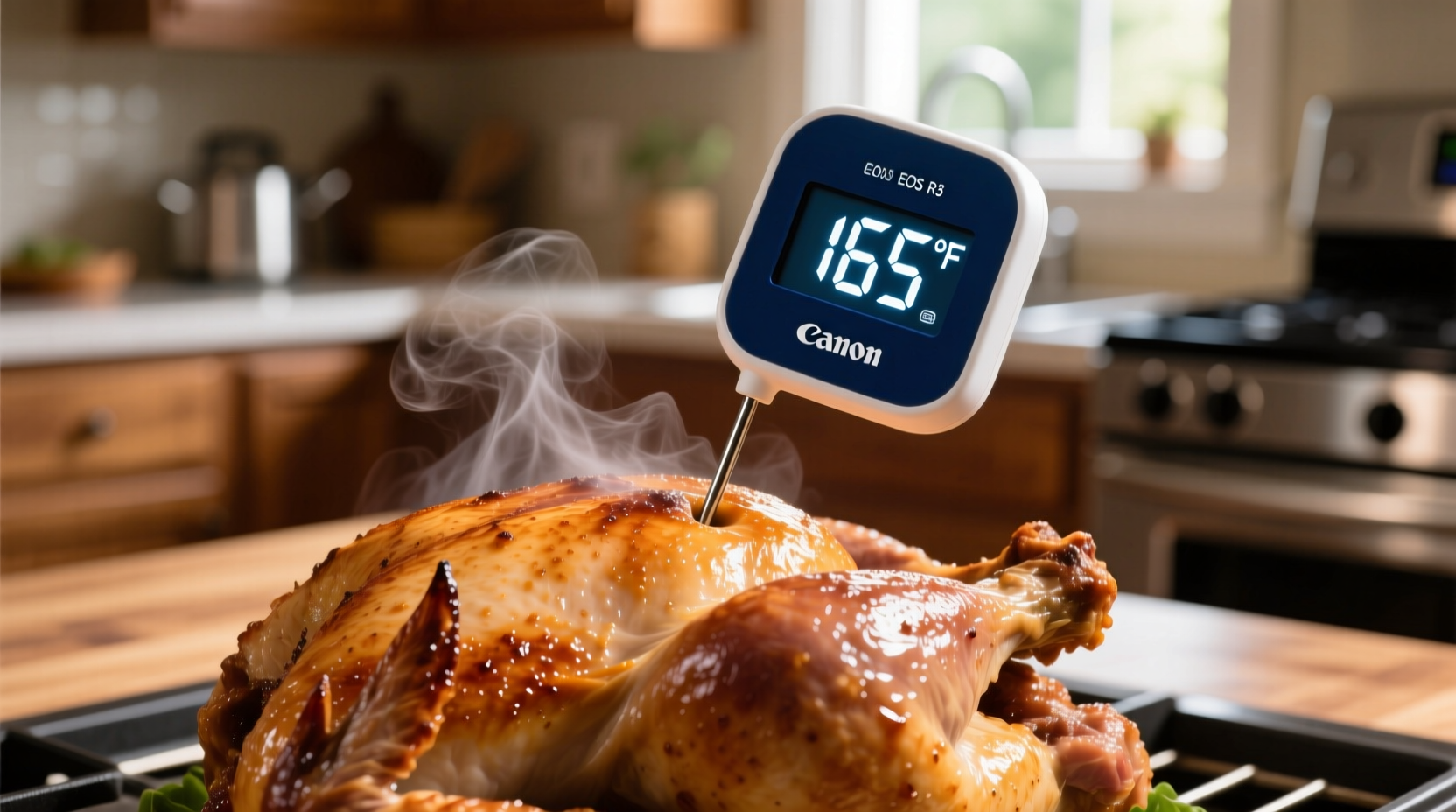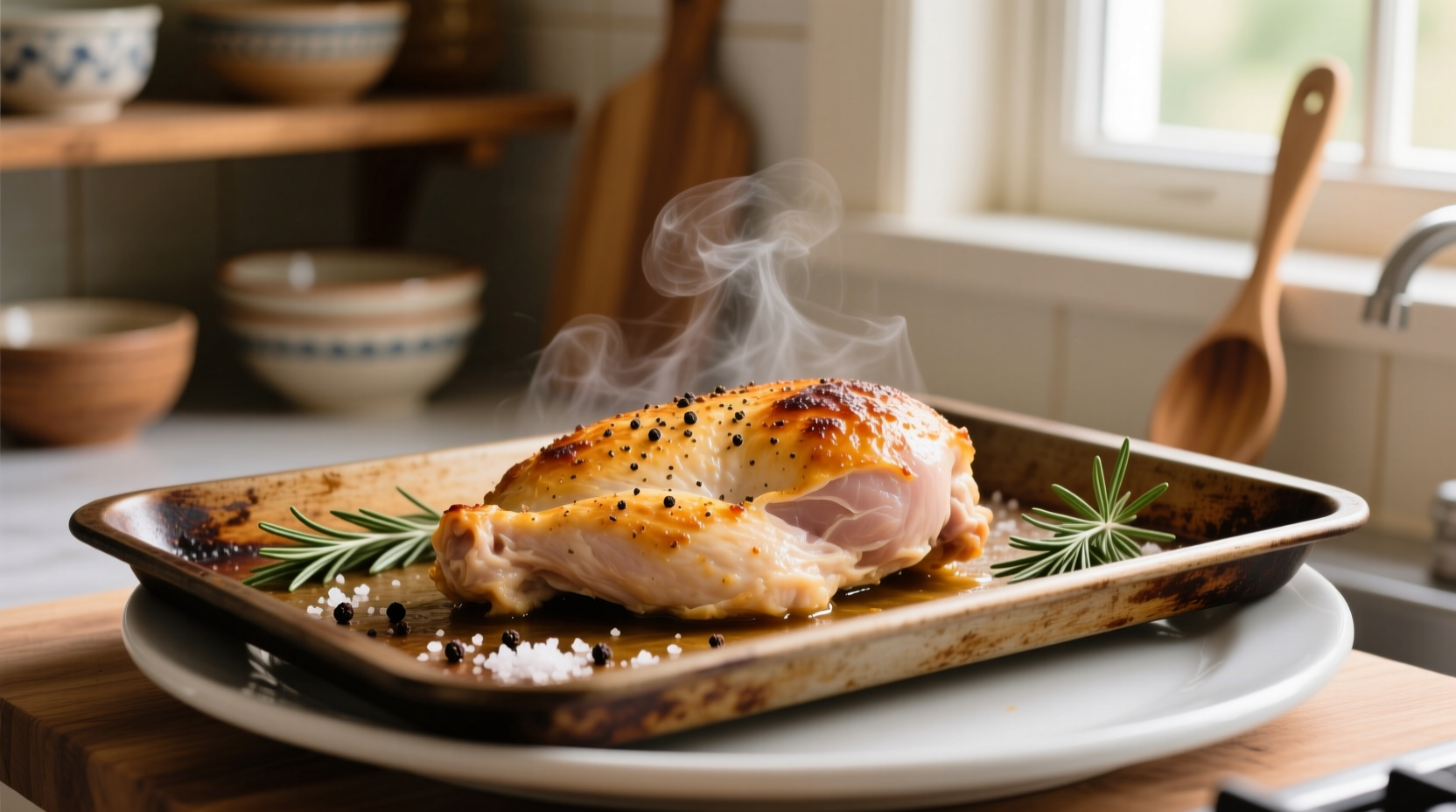Perfectly cooked oven chicken—juicy, flavorful, and safe to eat—starts with understanding precise cooking times and temperatures. Many home cooks struggle with dry, overcooked breasts or dangerously undercooked thighs simply because they follow generic time guidelines without considering critical variables like cut thickness, bone presence, and oven accuracy. This guide delivers exact cooking parameters based on USDA food safety standards and professional chef techniques, so you'll consistently achieve restaurant-quality results while eliminating food safety risks. Whether you're preparing weeknight dinners or special occasion meals, mastering these fundamentals transforms your chicken cooking forever.
Why Cooking Time Alone Isn't Enough
While "how long" is the most common question, experienced chefs know that time is just one factor in perfectly cooked chicken. The USDA Food Safety and Inspection Service emphasizes that internal temperature, not cooking duration, determines safety. Chicken must reach 165°F (74°C) to destroy harmful bacteria like salmonella. Relying solely on time guidelines often leads to either dry, overcooked meat or dangerously undercooked poultry.
Consider these critical variables that significantly impact your cooking timeline:
- Cut type and thickness - A 1-inch thick breast cooks faster than a 1.5-inch cut
- Bone presence - Bone-in pieces require 25-30% more cooking time
- Starting temperature - Chicken straight from the refrigerator needs extra minutes
- Oven calibration - Many home ovens vary by 25°F from set temperature
- Pan material - Dark metal pans cook faster than glass or ceramic
Complete Oven Chicken Cooking Reference
Use this comprehensive guide as your go-to reference for any chicken cut. All times assume a preheated 400°F (200°C) oven—the ideal temperature for balancing cooking speed and moisture retention. Remember to always verify with a meat thermometer at the thickest part, avoiding contact with bone.
| Chicken Cut | Weight/Thickness | Approximate Time | Visual Indicators |
|---|---|---|---|
| Boneless breast | 6-8 oz, 1 inch | 20-25 minutes | Golden exterior, juices run clear |
| Bone-in breast | 10-12 oz | 35-40 minutes | Skin crispy, pulls slightly from bone |
| Thighs (bone-in) | 6-8 oz each | 35-45 minutes | Deep golden skin, tender when pierced |
| Drumsticks | 4-6 oz each | 35-45 minutes | Skin crackles, meat separates from bone |
| Whole chicken | 3-4 lbs | 60-75 minutes | Legs wiggle freely, 165°F in breast |
This reference table aligns with the USDA Food Safety and Inspection Service guidelines, which mandate 165°F as the minimum safe internal temperature for poultry. Note that dark meat can be cooked to 170-175°F for optimal tenderness without drying out.
The Science of Carryover Cooking
Understanding carryover cooking is essential for perfect results. When you remove chicken from the oven, residual heat continues cooking the meat—a process called carryover cooking. This phenomenon explains why chicken often registers 5-10°F higher after resting.
Here's the temperature evolution timeline after oven removal:
- 0-3 minutes: Internal temperature continues rising rapidly
- 3-5 minutes: Peak temperature reached (5-10°F above oven temperature)
- 5-10 minutes: Temperature stabilizes as proteins relax
- 10+ minutes: Gradual cooling begins
Professional chefs leverage this by removing chicken at 155-160°F, allowing carryover cooking to reach the safe 165°F threshold while preventing overcooking. This technique, validated by American University's Culinary Science program, preserves maximum juiciness.

Step-by-Step Perfect Chicken Method
Follow this professional technique for consistently excellent results:
- Prep properly - Pat chicken completely dry with paper towels (critical for browning)
- Season generously - Salt at least 30 minutes before cooking for better flavor penetration
- Preheat thoroughly - Allow oven 20+ minutes to reach exact temperature
- Use thermometer from start - Insert probe into thickest part before oven
- Cook at 400°F - High enough for browning, low enough to prevent drying
- Check early - Begin checking 5 minutes before expected finish time
- Rest properly - Tent loosely with foil and rest 5-10 minutes before serving
Avoid These Common Cooking Mistakes
Even experienced cooks make these critical errors that compromise results:
- Not using a thermometer - Time guidelines fail when variables change
- Crowding the pan - Creates steam instead of oven roasting effect
- Skipping the rest period - Causes juices to escape when cut
- Opening oven frequently - Drops temperature by 25-50°F each time
- Ignoring oven hot spots - Rotate pan halfway through cooking
Advanced Techniques for Restaurant-Quality Results
Elevate your chicken with these professional methods:
- Dry brine - Salt chicken 12-24 hours before cooking for deeper flavor and moisture retention
- Sear first - Brown chicken in oven-safe skillet before transferring to oven
- Baste strategically - Only during last 10 minutes to prevent skin sogginess
- Use convection - Reduce temperature by 25°F and check 5 minutes early
- Finish under broiler - For extra-crispy skin in final 2-3 minutes
Remember that oven performance varies significantly between models. The National Institute of Standards and Technology reports that home ovens can deviate by ±25°F from set temperature, making thermometer use essential regardless of cooking time guidelines.











 浙公网安备
33010002000092号
浙公网安备
33010002000092号 浙B2-20120091-4
浙B2-20120091-4